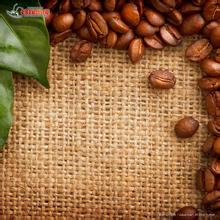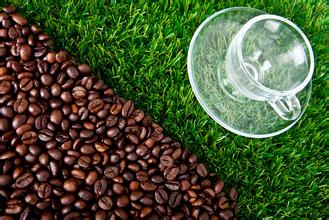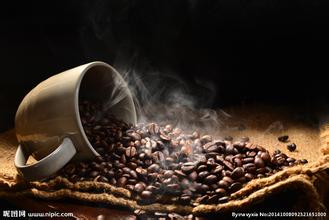Introduction to the characteristics of High-quality Coffee beans in the Coffee Flavor planting area of Silver Mountain Manor, Jamaica
Located in the northwest of the Caribbean Sea, Jamaica is an island country at 17.42 degrees north latitude and 18.31 degrees north longitude and 76.11 degrees to 78.22 degrees west longitude. [1] the island of Jamaica is 234km long from east to west and 82km wide from north to south, with a territorial area of 11420 square kilometers, of which the land area is 10991 square kilometers. To the east across the Strait of Jamaica, facing Haiti, about 140 kilometers north of Cuba. It is the third largest island in the Caribbean, with a coastline of 1220 kilometers. Jamaica ranks third in the West Indies, second only to Cuba and Haiti. [2]
Topography
The coastal areas are alluvial plains. Such as: Guaneya plain; mountains in the east, hills and limestone plateaus in the middle and west. Karst landforms are well developed, lack of surface runoff and many caves. [2]
Climate
Tropical rainforest climate. The rainy season is from May to June and from September to November every year, with the most showers in January and May. The dry season is from December to March next year, and the weather turns cooler. The half-year period from June to the end of November is often hit by hurricanes and tropical storms. The north-central region is rich in rainfall, the climate is generally between 22 and 32 degrees, and the annual average temperature is 27 degrees. [6]
Resources
Jamaica's resources are mainly bauxite, with reserves of about 2.5 billion tons, ranking fourth in the world, with an exploitable capacity of 1.5 billion tons and an annual output of 15 million tons of bauxite, second only to Australia. [2] other rich resources include copper, iron, lead, zinc and gypsum. The forest area is 265000 hectares.
Administrative division editor
Zoning
The country is divided into three counties: Cornwall, Middlesex and Surrey. The three counties are further divided into 14 districts, of which Kingston and St. Andrews form a joint district, so there are actually only 13 district governments. The names of the districts are as follows: United District of Kingston and St. Andrew, St. Thomas, Portland, St. Mary, Santa Ana, Trelawney, St. James, Hanover, Westmorland, St. Elizabeth, Manchester, Clarendon, St. Catherine.
The producing area of Jamaican Blue Mountain Coffee is strictly limited to 910-1700m above sea level in Jamaica Blue Mountain area.
Strictly speaking,
Coffee grown at 910-1700m is called Jamaican Blue Mountain Coffee.
Coffee grown at 460-910m is called Jamaican Alpine Coffee.
Coffee grown below 460m is called Jamaica preferred Coffee.
There is no coffee growing in the forest reserve above 1700m.
Jamaica is a tiny coffee grower, accounting for only 0.02 per cent of the world market, with 85 per cent of its exports to Japan.
Among them, the leading role is the Jamaican Coffee Industry Association (Coffee Industry Board, referred to as CIB), which was established in 1948 to promote the development of the Jamaican coffee industry, improve the income of coffee farmers, protect the quality of Jamaican coffee, and sell Jamaican coffee around the world.
In order to ensure the quality of Blue Mountain Coffee, CIB has made a series of specifications:
1. Clearly define the production area
two。 Choose to plant Arabica tin card varieties
3. Training coffee farmers (planting techniques, harvest handling techniques, environmental protection, etc.)
4. Improve coffee processing skills (insist on picking by hand, picking only fully ripe red fruits; use water washing; control drying conditions so that the target moisture content of coffee beans is 12%).
Since 1953, CIB has classified coffee grown in this region as Blue Mountain Coffee according to its special origin. By 1980, Jamaican Blue Mountain Coffee had become so famous that some British and American retailers labeled it as "Blue Mountain Coffee" on non-Jamaican coffee. To this end, CIB specially designed a label that can only be affixed to 100% Jamaican Blue Mountain Coffee in 1984-1985. There are also Jamaican alpine coffee and preferred coffee LogO.

Important Notice :
前街咖啡 FrontStreet Coffee has moved to new addredd:
FrontStreet Coffee Address: 315,Donghua East Road,GuangZhou
Tel:020 38364473
- Prev

Introduction to Atlanta Manor in Jamaica Blue Mountain Coffee growing area
Jamaica is a constitutional monarchy. On August 6, 1962, the current Constitution entered into force. The head of state of Jamaica is the Queen of England, and the Governor of Jamaica is appointed by the Queen after being recommended by the Prime Minister to the Queen. In accordance with the provisions of the Jamaican Constitution, the Governor appoints the Majority Leader of the House of Representatives as the Prime Minister of the Government and appoints Cabinet Ministers on the basis of the Prime Minister's nomination. The Jamaican Parliament is made up of appointed and
- Next

No bitterness of Jamaican boutique coffee Blue Mountain Coffee Cliff Manor Coffee
Free education is provided in primary and secondary schools. The education system is divided into four stages: preschool education, primary education, secondary education and higher education. The cost of primary and secondary education is all borne by the state, while the cost of higher education is shared by the students themselves and the country. [35] in 2006 / 2006 / 2007, the government invested 47.9 billion yuan in education, accounting for 12.6% of the total budget. Preschool, elementary, medium and higher
Related
- Does Rose Summer choose Blue, Green or Red? Detailed explanation of Rose Summer Coffee plots and Classification in Panamanian Jade Manor
- What is the difference between the origin, producing area, processing plant, cooperative and manor of coffee beans?
- How fine does the espresso powder fit? how to grind the espresso?
- Sca coffee roasting degree color card coffee roasting degree 8 roasting color values what do you mean?
- The practice of lattes: how to make lattes at home
- Introduction to Indonesian Fine Coffee beans-- Java Coffee producing area of Indonesian Arabica Coffee
- How much will the flavor of light and medium roasted rose summer be expressed? What baking level is rose summer suitable for?
- Introduction to the characteristics of washing, sun-drying or wet-planing coffee commonly used in Mantenin, Indonesia
- Price characteristics of Arabica Coffee Bean Starbucks introduction to Manning Coffee Bean Taste producing area Variety Manor
- What is the authentic Yega flavor? What are the flavor characteristics of the really excellent Yejasuffi coffee beans?

